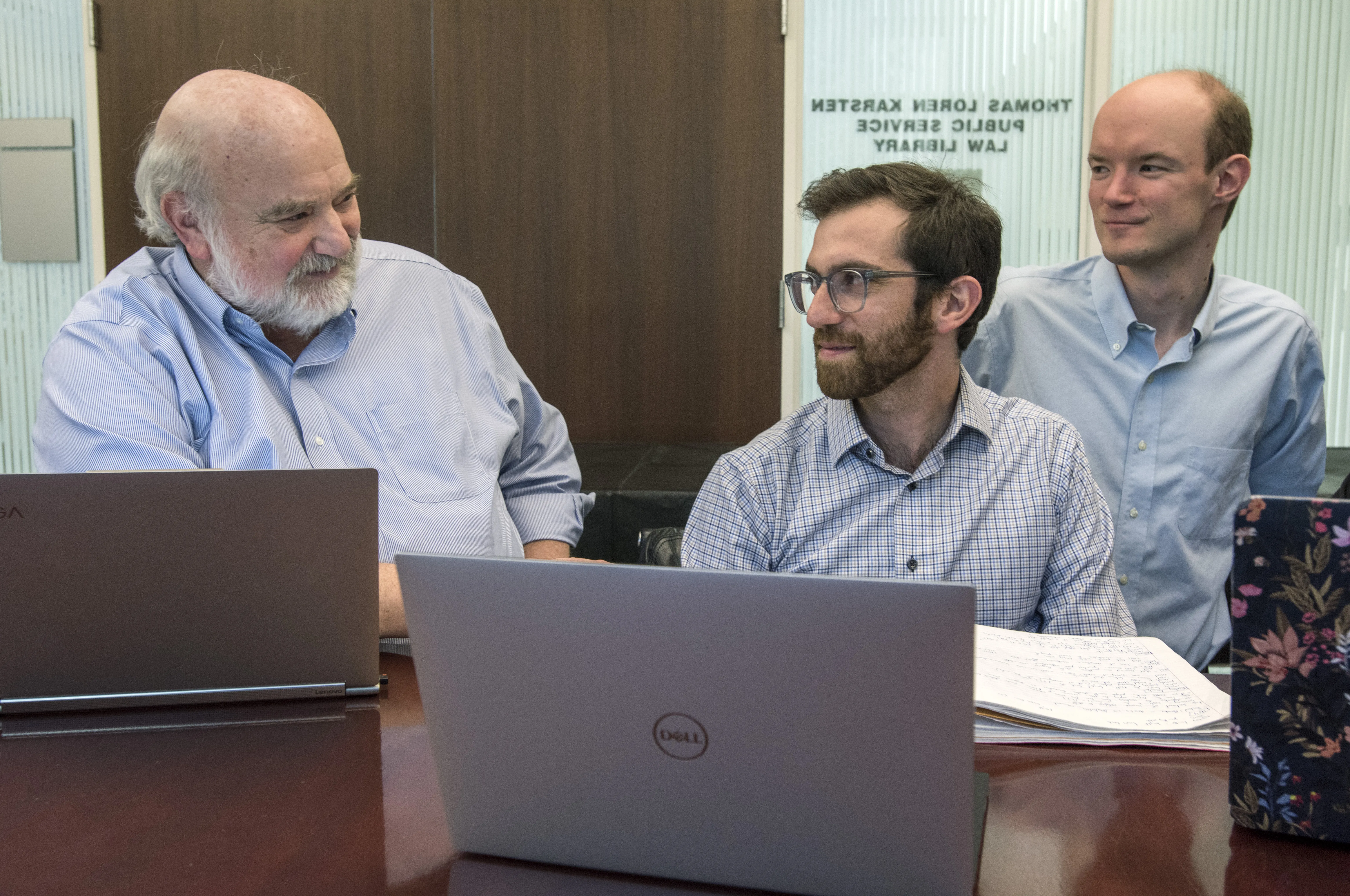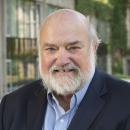How Class Action Litigation by the Employment Law Clinic Recovered $9.25 Million for CPS Teachers

One autumn day during his third year of law school, Simon Jacobs, ’22, spent more than eight hours in Clinical Professor Randall D. Schmidt’s office in the Law School’s Kane Center, participating in a class action settlement conference via speaker phone. It was an experience that he would later remember as one of the most pivotal of his Law School career, right up there with an oral argument he delivered before the US Court of Appeals for Seventh Circuit.
The marathon meeting was an important step in ending a pair of years-long federal discrimination lawsuits led by the Law School’s Employment Law Clinic—a settlement that resulted in $9.25 million for more than 400 Black teachers and paraprofessionals who were terminated as part of the Chicago Board of Education’s plan to “turn around” 17 schools on the city’s South and West sides.
The cases were complex. Most of the schools slated for turnaround were in predominantly Black neighborhoods, and the selection criteria—which focused on student attendance and academic performance metrics—failed to account for the teachers’ performance ratings, years of service, or other potentially race-neutral criteria. The result was a decline in the proportion of Black teachers in CPS, something that Schmidt and his team argued might have been avoided had the Board pursued an alternative strategy.
The litigation stretched nearly a decade, with the sides arguing over the selection criteria, offering dueling accounts from statistical experts over whether the layoffs amounted to discrimination, and battling over whether the court should certify the teachers and paraprofessionals as a class. Finally, in September 2022, several months after Jacobs graduated, a federal judge approved the multimillion-dollar settlement.
“Randy emailed me [with the news] and it was exciting—this was something I’d worked on since the summer before my 2L year, and I knew all of the history that was there, and it felt really good to see the impact of all that work,” said Jacobs, now a clerk on the Massachusetts Supreme Judicial Court. “I mean, $9.25 million for teachers who had been dismissed from their jobs—there were concrete effects of work that I and others had done.”
The cases were emblematic of a strategy that Schmidt has increasingly embraced: making a broader impact on the community and the law by focusing on group representation rather than individual cases. These cases were not only about the individual teachers and paraprofessionals, Schmidt and his team had argued: the turnarounds had disproportionately impacted Black communities and Black educators.
By pursuing the litigation as a class action, the team could seek relief for the more than 400 employees who had been affected by the turnarounds, a controversial process that involved mass layoffs and, in most cases, an outside management firm coming in to run the school. This focus was of particular interest to Schmidt and had been since the US Supreme Court’s 2011 ruling in Wal-Mart v. Dukes, which barred 1.5 million women from being certified as a class in an employment discrimination case against the retailer. That ruling made it more difficult to certify a class in an employment discrimination suit—but it didn’t eliminate the potential.
Schmidt, who joined the Law School’s clinical faculty in January 1981, wanted to prop open that window of opportunity.
“Since that decision in Wal-Mart v. Dukes, we’ve wanted to make it really clear that class action employment discrimination cases are still possible,” he said.
Layoffs Followed by Lawsuits
The CPS cases began in late 2012, a few months before the clinic got involved, when the Chicago Teachers Union and three affected teachers filed the first of two lawsuits, alleging illegal racial discrimination.
Vivonell Brown Jr., who had been a teacher at Woodson Elementary in Bronzeville for about two decades when he was dismissed in 2012, was one the initial plaintiffs. Brown had two master’s degrees, experience teaching a wide variety of subjects, and plans to become a principal. He’d always had high performance ratings, he said.
“Then one morning a person from the Board of Education showed up just out of the clear blue sky and he told the entire staff that we were going to have to find new jobs or re-apply for our old positions,” Brown said.
For awhile, he moved around CPS, working in schools for two weeks at a time, before taking a temporary position at an elementary school. The constant movement was difficult and carried a stigma; his dreams of becoming a principal eventually evaporated and he retired.
He joined the lawsuit early on, in part because he wanted to help end the practice of turnarounds.
“I had teachers who came to me and said, ‘You know, something ought to be done.’ And I felt that, well, I don't have anything to lose—so I'm all in,” he said. “[My union representative] said, ‘If you'll fight with us, we’ll stand by your side … and we’ll make sure this will not happen to another minority school in Chicago. We're going end this practice, but we need to fight.’ And I felt her words.”
When Schmidt and his students got involved in 2013—joining Robin Potter and Patrick Cowlin of Fish Potter Bolaños—they began working on a strategy to use statistical analysis to prove disparate impact and convince the court to certify the affected teachers as a class. The idea was to win relief for the hundreds who had been impacted by the decisions—and to push the district toward non-discriminatory strategies for improving school performance.
The team succeeded in its bid for class certification on appeal to the US Court of Appeals for the Seventh Circuit in 2015 after convincing the panel that the Wal-Mart case didn’t bar class certification in this case. A second lawsuit, on behalf of Black teachers and paraprofessionals dismissed as part of school turnarounds conducted in 2013 and 2014, was filed later that year.
“This was an extension of the work we had already been doing with class actions, and I thought this case and the other case would give the students a great opportunity to work with some pretty sophisticated statistical and other experts,” Schmidt said.
Alumni who worked on the project as students said they gained robust experience in class action litigation; the use of Title VII, which prohibits employment discrimination based on race, religion, sex, and national origin; working with experts and statistical analysis; navigating settlement negotiations; and much more.
Kailin Liu, ’21, said she remembers arriving in the clinic and being fascinated by Seventh Circuit’s decision to reverse to lower court’s class certification denial.
“I’d read about class action lawsuits and how they could be used to redress various injustices, but I appreciated peeling back the curtain and [learning to] articulate: Why does this get to be a class action? Does it meet the requirements and so forth?” she said.
She said she was surprised by how often the two sides would disagree, even when working with the same set of data.
“Both the plaintiffs and defendants had engaged experts to do statistical analysis on how much race correlated with which schools were selected for turnaround, which determined who was laid off and who wasn’t, but even [decisions] as technical as what variables got dumped into the regressions [were disputed], which led to different conclusions,” said Liu, now a clerk on the Seventh Circuit.
“The law students from the clinic were indispensable—it is difficult to imagine recovering the settlement we did without them."
Patrick CowlinCo-counsel, Partner at Fish Potter Bolaños
Jacobs said he gained an appreciation both for the ways in which Schmidt argued the case and the ways in which the clinic worked with co-counsel.
“Randy and our co-counsel represented the class and our co-counsel also represented the union, and it was interesting to see how those different parties impacted both sides’ legal arguments and to experience the power dynamic with the defendant,” he said.
Jacobs gained valuable experience that came not just from writing briefs but from observing other people. During the settlement conference, for instance, he was fascinated by the different players: the magistrate judge who was presiding; their co-counsel; lawyers for the Chicago Board of Education and their insurance companies; and representatives of the Chicago Teachers Union.
“It was fascinating hearing their experiences and perspectives,” Jacobs said.
But what was particularly informative was watching Schmidt in action: he was able to guide students through the steps and even predict more or less what would happen, Jacobs said.
“At the beginning of the day [of the settlement negotiation call], Randy said, ‘We're going to settle somewhere between this number and this number but it’s going to take us a long time to get there,” Jacobs said. “And he was exactly right.”
The clinic’s students contributed just as much, if not more, to the success of the cases compared to what they took away from it, Schmidt said. Numerous law students spent thousands of combined hours working on difficult issues over the almost 10-year history of the cases.
“The law students from the clinic were indispensable—it is difficult to imagine recovering the settlement we did without them,” noted attorney Patrick Cowlin, now a partner at Fish Potter Bolaños. “They brought unique legal writing, analytical, and organizational skills that helped us through class certification, discovery involving thousands of documents, depositions, and summary judgment, to the point the case was set for trial. You do not see that in many discrimination cases, especially class actions. It was an absolute privilege to absorb their insight and to have them on our team.”
The settlement resulted in payments between about $11,000 and $80,000 for each of the affected teachers and paraprofessionals who participated in the settlement. For Brown, the outcome also provided a feeling of validation, as well as the end to what had been a decade-long roller coaster.
“I thought Randy's whole team over there was just great—they had a great group of students—and they were trying to move heaven and earth,” he said. “I really appreciated them all so much because when this all started, I just didn't think anybody cared.”
Schmidt said the result made him “very happy for the clients.”
“Mr. Brown, Mr. Green, and Mr. Garrett [the original plaintiffs] stuck with us for a decade,” he said. “There were some times when I think some of them thought they might never see a resolution, but they stuck with us and let us continue to litigate, and that led to this successful settlement.”
He said his hope is that the settlement in this case encourages CPS and other school districts to reevaluate the educational policy and goals behind turnarounds.
“There are alternatives that will improve student performance without getting rid of all the teachers at a school,” he said. “There is no need to do turnarounds like CPS has in the past.”
